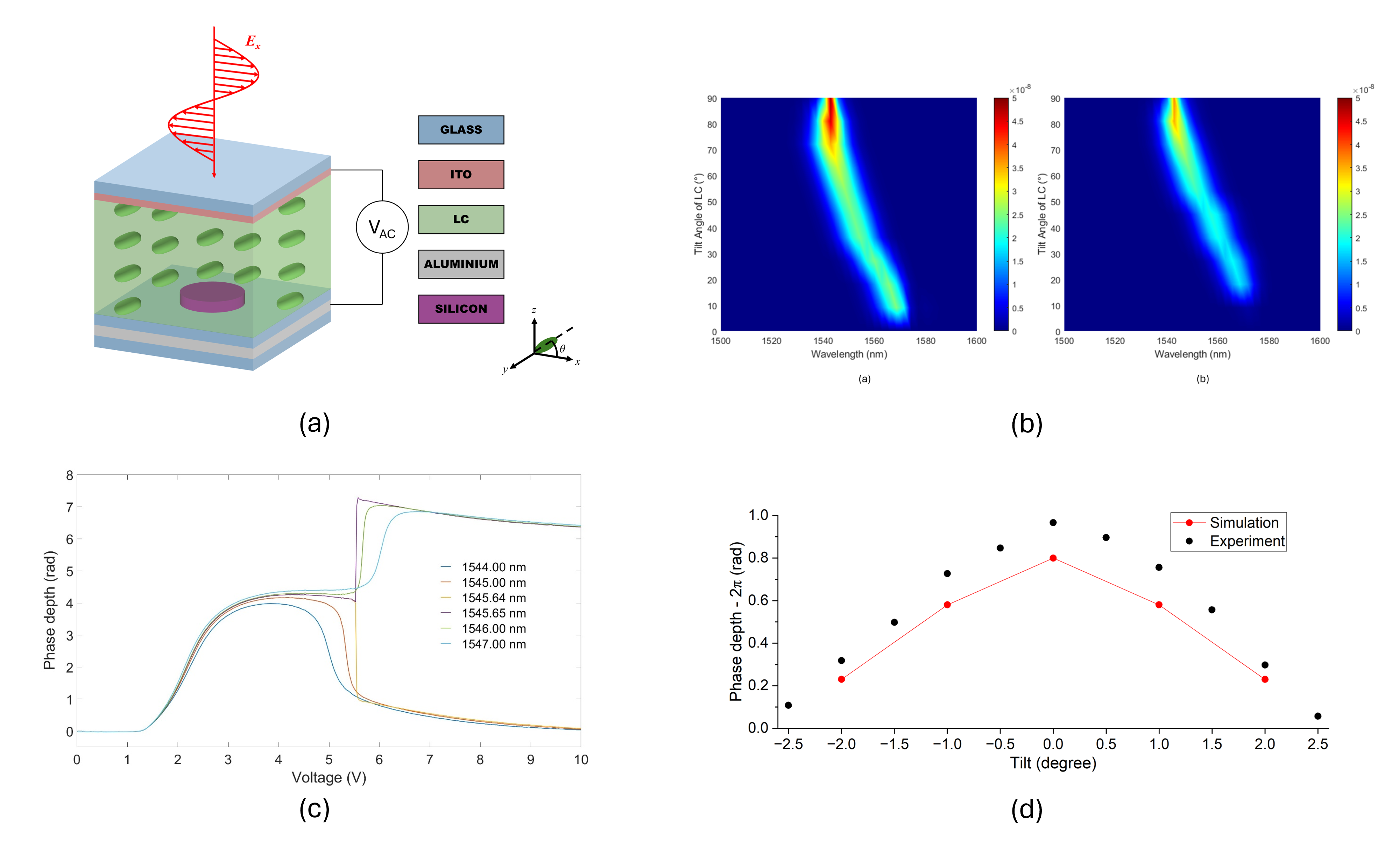
CPDS Researchers Develop Fast-Speed Electrically Tunable Metasurface for Full 2π Phase Modulation
A groundbreaking study from the Centre for Photonic Devices and Sensors (CPDS) at the University of Cambridge, led by Wenhan Zhang, Dr. Mike Pivnenko, and Professor Daping Chu, introduces a fast-speed electrically tunable liquid crystal (LC) metasurface capable of achieving continuous 2π phase modulation at both normal and oblique angles of incidence. The work has been published in Optics Express (Vol. 33, No. 4, 2025) and has been selected as an Editor's Pick, a distinction highlighting its scientific excellence and significance in the field of tunable photonics.
The proposed metasurface leverages electric dipole (ED) and electric quadrupole (EQ) resonances to enhance phase modulation efficiency, enabling a peak phase modulation depth of 7.23 radians while maintaining a reflectance exceeding 60% at normal incidence. Importantly, the device sustains full 2π phase modulation for off-axis incidence up to ±2.5°, marking a significant improvement in dynamic beam steering and adaptive optics applications.
One of the standout features of this metasurface is its ultrafast response time, with a rise time of 0.7 milliseconds and a fall time of 3.5 milliseconds, made possible by the reduced LC thickness and the strong anchoring force provided by the metasurface nanostructures. This tenfold improvement over conventional LC-based phase modulators makes the device particularly promising for applications in optical communications, spatial light modulators, and holography.
The research, funded by the Engineering and Physical Sciences Research Council (EPSRC) and supported by the Henry Royce Institute, showcases the potential of metasurface-integrated LC devices to revolutionize high-speed optical modulation technologies.
The full paper is available at: https://doi.org/10.1364/OE.554542.
Figure 1: (a) Schematic diagram of the LC-tuned metasurface unit cell, (b) Scattering power of (a) ED resonance and (b) EQ resonance as functions of wavelength and LC tilt angle for the LC-tuned metasurface, (c)phase modulation depth as a function of voltage for representative wavelengths near the resonance position 1545.65 nm, and (c) 2D map of reflection spectra as a function of voltage and wavelength, and (d) ) phase modulation depth beyond 2π as a function of incident angle.


